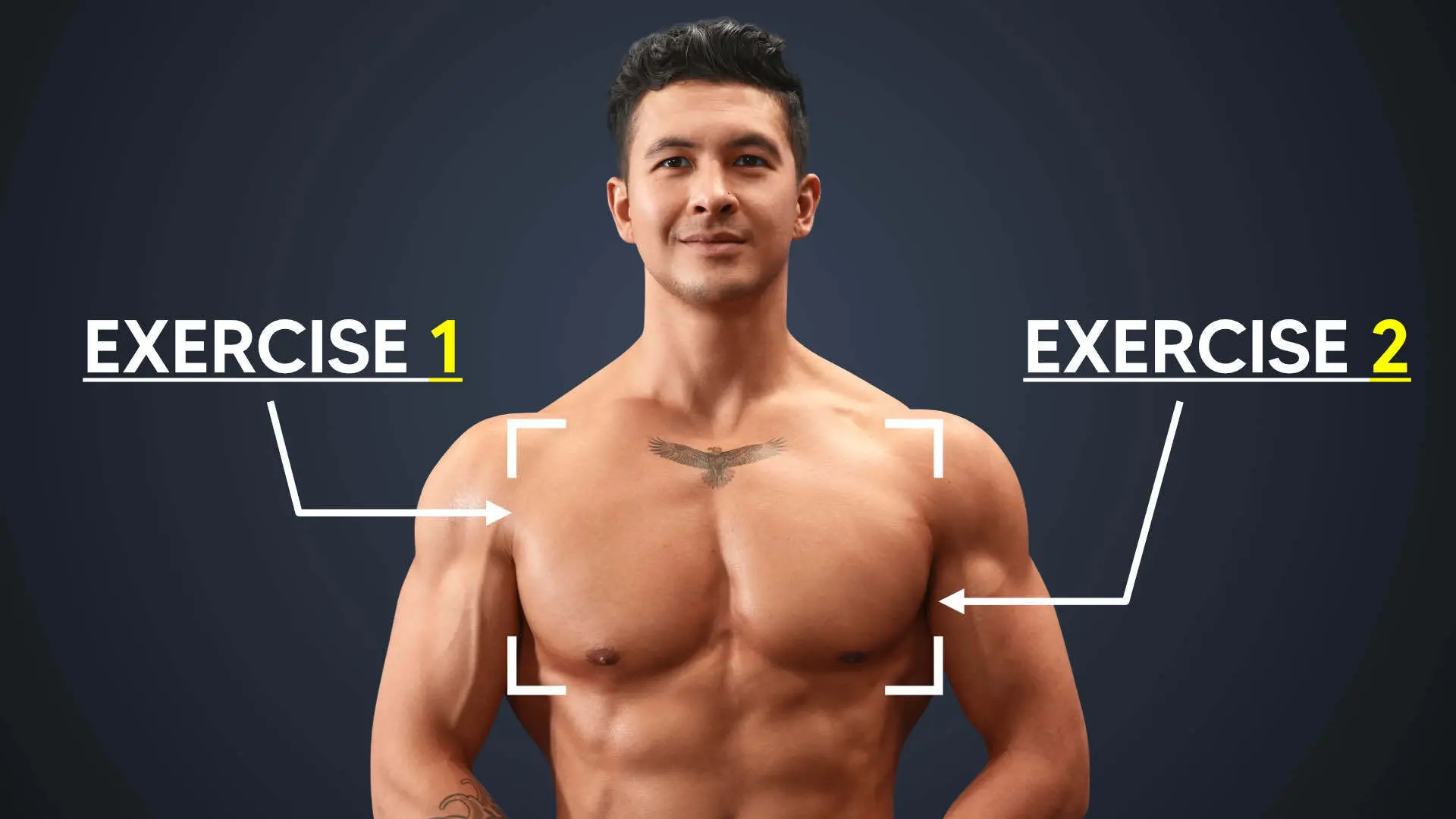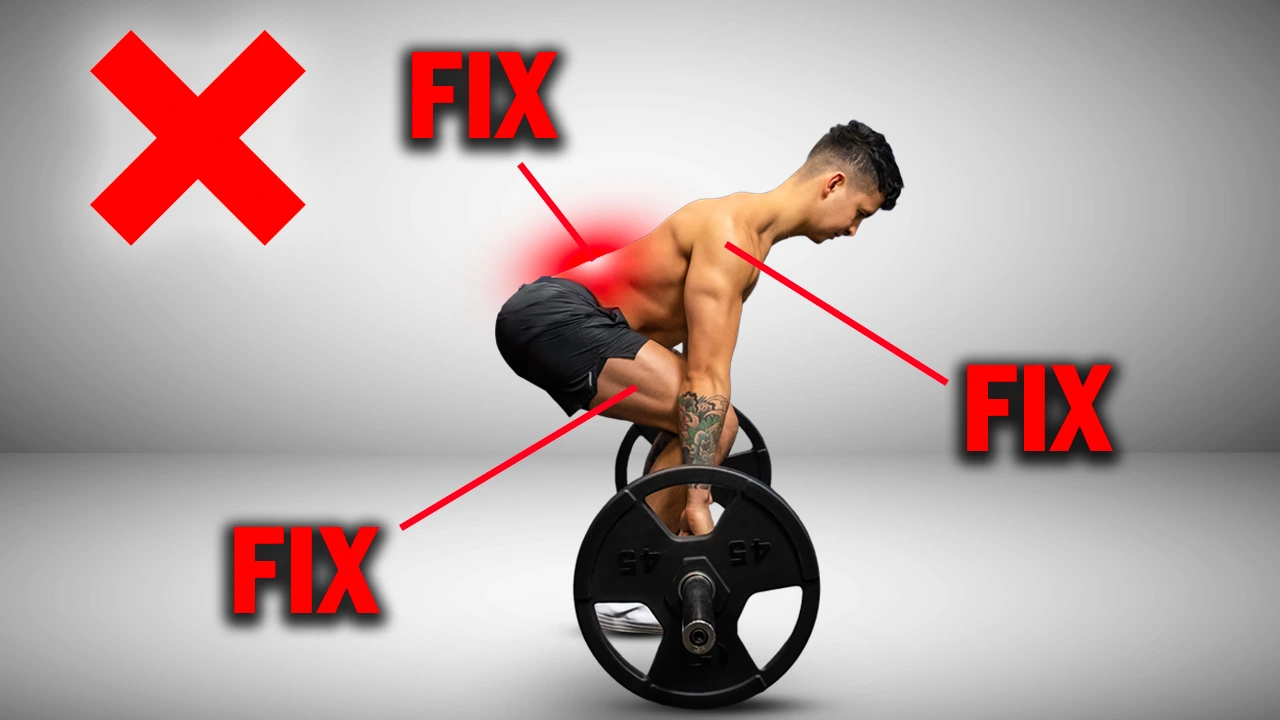
How To Deadlift PROPERLY For Growth (5 Easy Steps)
Deadlifts can be scary, especially if you don't know how to deadlift with proper form. Here's how to master your deadlift form in 5 easy steps.
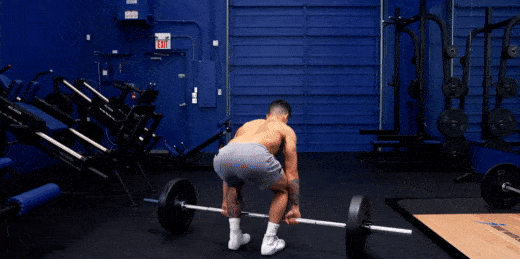
Here's how to deadlift with proper form (the shortened version):
Step 1: Stand with your feet hip-width apart and the bar over your mid-foot.
Step 2: Make a fist and punch your hands down to the floor to activate your lats. Then, push your hips back and bend your knees until you can reach the bar. Grab it just outside your knees.
Step 3: Before lifting the bar, drive your knees out against your arms, take a deep 360 breath, and brace your core. Extend your chest to flatten your back then squeeze your armpits to activate your lats.
Step 4: Push down with your feet until the bar passes your knees, and then thrust your hips forward to finish the lift.
Step 5: Control the weight as you lower it by pushing your hips back and sliding the bar as close as possible along your thighs. Once the bar passes your knee caps, bend your knees and slide it along your shins to return it to the starting position.
...now the above steps will be great reminders for you once you start practicing your deadlift form. But to take your deadlift form to the next level, it's important to go through the detailed step-by-step "how to deadlift" guide outlined in this article.
Deadlift Muscles Worked
To understand how to deadlift with proper form, it'll be helpful for you to first know what muscles are worked during the exercise.
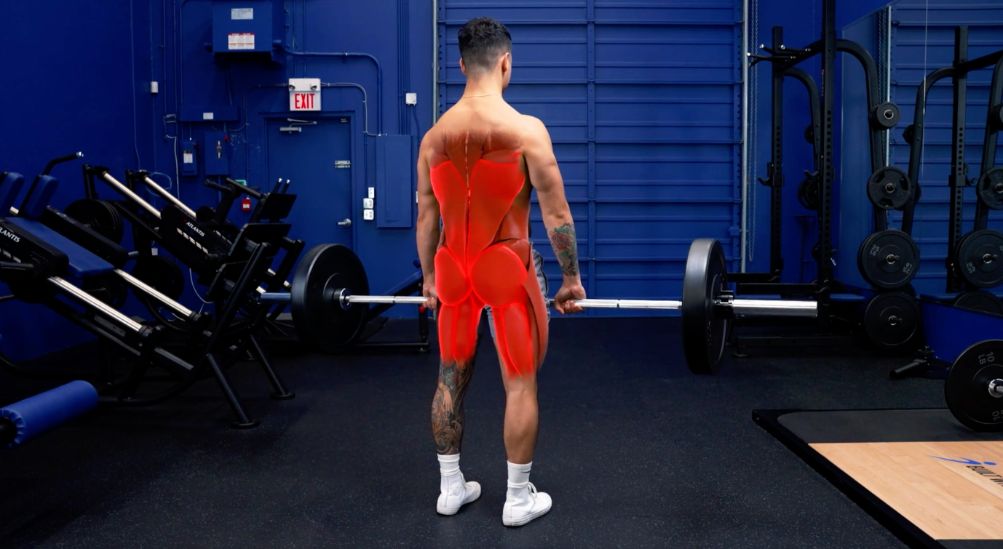
With proper deadlift form, the muscles worked when deadlifting may not be what you expect. The prime movers of a proper deadlift are your legs. Mainly the glutes and hamstrings.
However, many other muscles will be contracting isometrically during the deadlift to help you stabilize the weight. Your back muscles, for example, help keep your spine neutral and protected as you lift the weight.
As for what back muscles will be involved, you will mainly feel it in your traps, lats, and also your lower back muscles. So don't be alarmed if your lower back muscles feel a bit "tense" or "sore" after deadlifting. This is normal, which is why it's important to know what muscles are worked when deadlifting.
So, to re-cap:
Prime Movers:
- Glutes
- Hamstrings
Other Muscles Worked:
- Traps
- Lats
- Erector spinae (lower back muscles)
Now that you know the muscles worked from deadlifts, let's talk about how to deadlift with proper form.
How To Conventional Deadlift With Proper Form
The two main types of deadlifts variations are the conventional deadlift and the sumo deadlift. There's also the trap bar deadlift which involves the use of a trap-bar. The conventional deadlift is the most common variant, which involves gripping the bar outside of your knees. Sumo deadlift involves a wider stand and gripping the bar inside the knees.
So, to prevent confusion, this article teaches you how to deadlift properly with the conventional form.
Step 1: Creating The Pillar
When it comes to how to deadlift safely and effectively, getting this (i.e., creating the "pillar") right is crucial.
We need to get your bones in the right place before we even consider bending down to grab the bar. So, let's start with your feet:
- Walk up to the bar and align it right over your shoelaces in the middle of your foot.
- Widen your feet to about hip-width apart with your toes facing forward. For most people, this is the best foot stance, but later in step 4, if this feels uncomfortable, you can widen your feet and/or point your toes outward — and see if that works better for you.
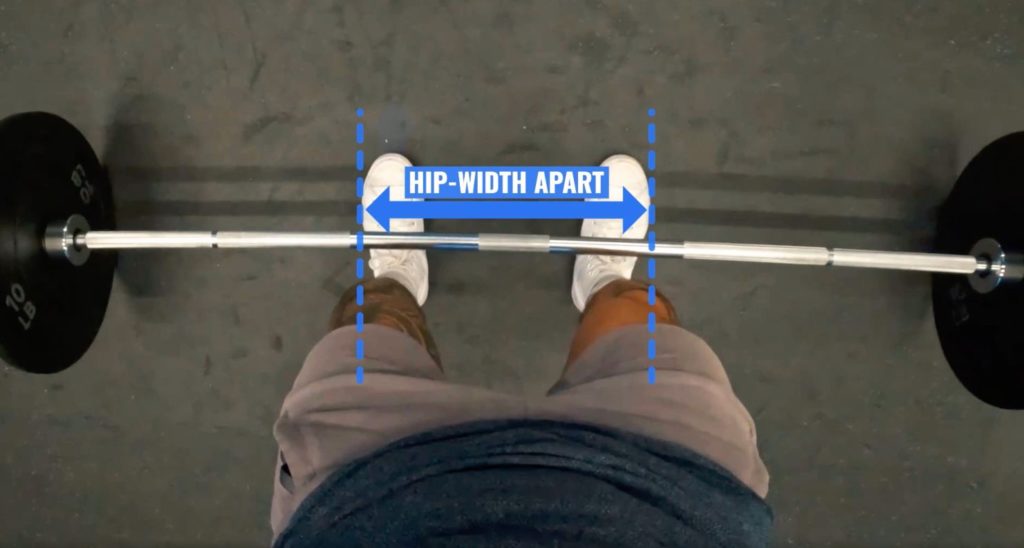
Next, we need to fix your hips and ribs into the correct position. Deadlift form with misaligned hips and ribs is the most common reason for a back injury.
The most important part of learning how to deadlift properly is to be mindful that the hips and ribs should remain stacked like a pillar. And they should stay that way as you lift.
To do that, let's start with the hips.
Think of your hips as a bowl full of water. Most people stand with an anterior pelvic tilt, which causes the water to tip over the front of the bowl. Instead, tilt your pelvis back so the bowl is flat.
You can think as if you were trying to bring your belt buckle to your chin.
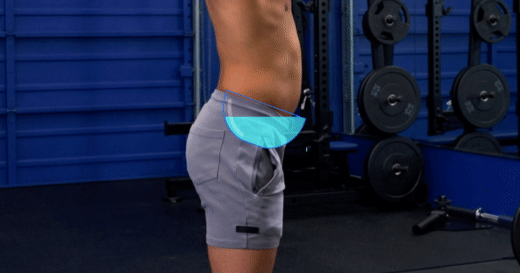
As for the ribs? Well, most people stand with them flared out. But here's the trick to learning how to deadlift properly: you should actually flatten them by engaging your core.
At this point, your ribs and hips should be stacked evenly on top of each other:
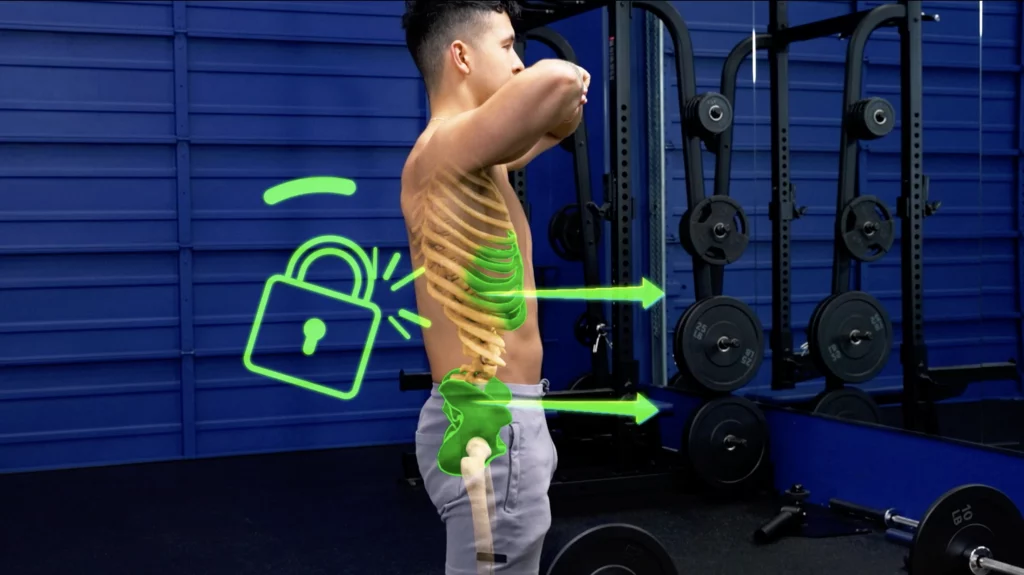
But to keep them locked in that position, squeeze your glutes and inner thighs together:
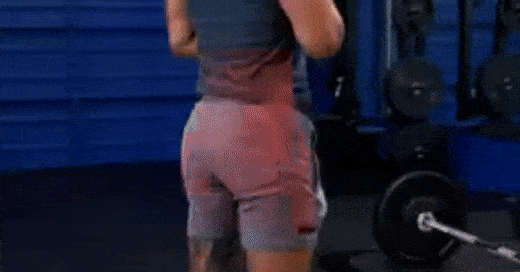
You should feel yourself getting taller as you do so.
And finally, make a fist in each hand and push them down toward the ground to straighten your arms and activate your lats.
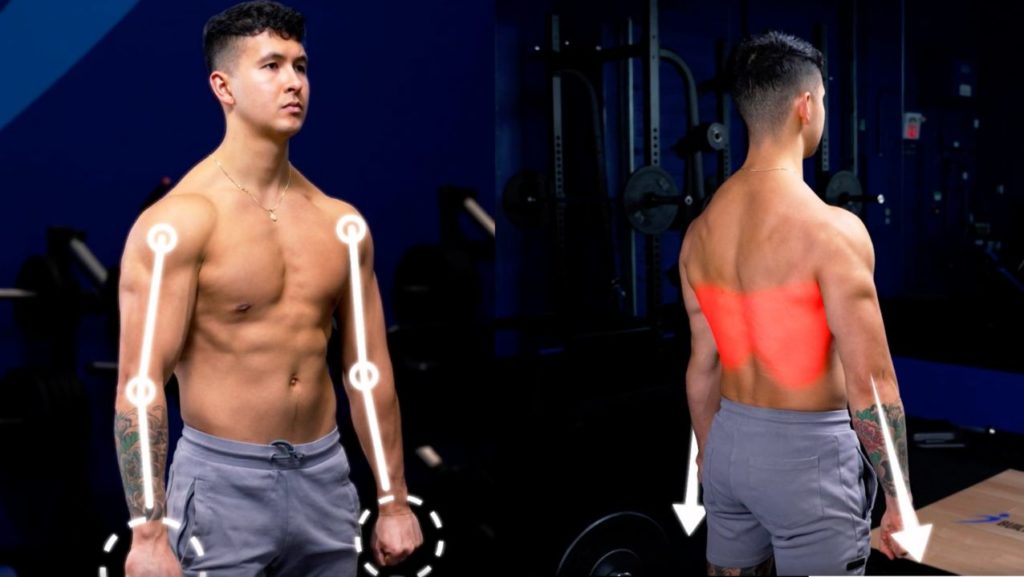
At this point, you should feel your glutes, inner thighs, core, and lats all working. Now, you're ready for step 2 of mastering how to deadlift properly: grabbing the bar.
Step 2: Grabbing The Bar
This is where most people will round their back and shoulders — and will thus lose the tightness we worked so hard to create.
Instead, I want you to keep the pillar we created in step 1 of learning how to deadlift and start pushing your hips back while keeping your fists pushing straight down under your shoulders.
You can imagine you have a bag full of groceries in each hand, and you're trying to close the car door with your butt.

You want to continue pushing your hips back as far back as you can WITHOUT your big toes coming off the ground. The moment you lose pressure in the big toe is the moment you've pushed your hips back too far.
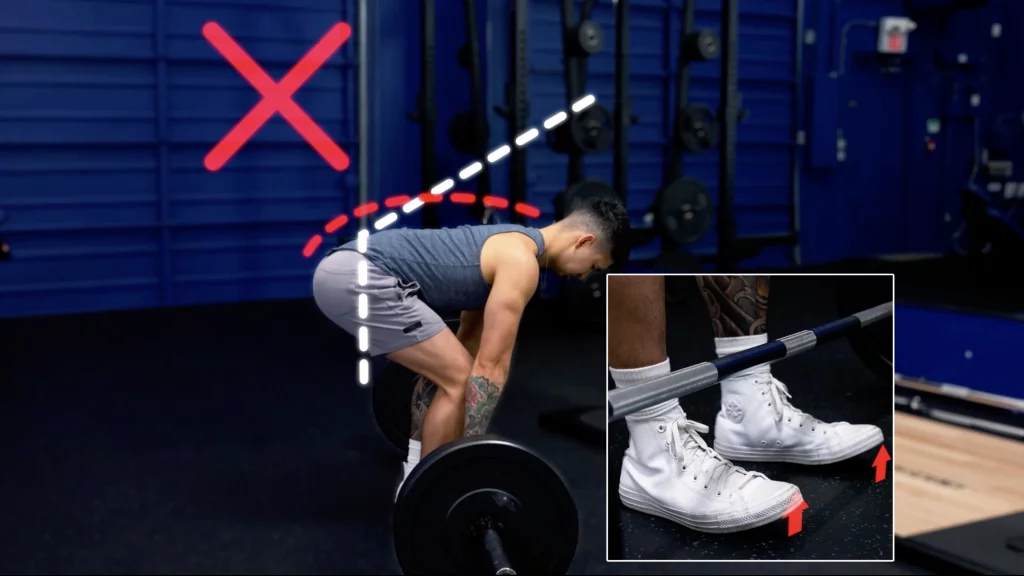
Once you reach that endpoint, bend your knees and bring your shins to the bar to pull yourself down those last few inches.
Keep going until you can hook your hands onto the bar just outside your knees.
How To Deadlift: Before Moving On, Check For These 3 Things In Your Deadlift Form
- The further away the bar is from you, the more strain will be placed on the lower back. This is why the bar must be directly over your mid-foot, with your shins just about touching the bar. NOT like the image below.
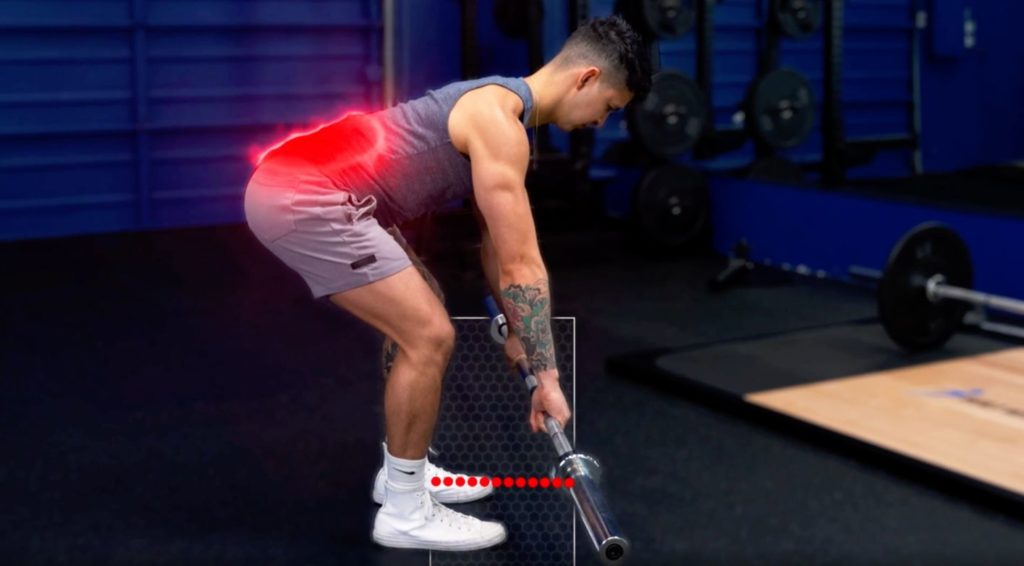
2. If your hips are too high, you'll use more of your lower back. But if your hips are too low, you'll end up doing more of a squat than a deadlift. Although every individual's deadlift form will look slightly different depending on anatomy, you want your hips to be somewhere above your knees but below your shoulders.
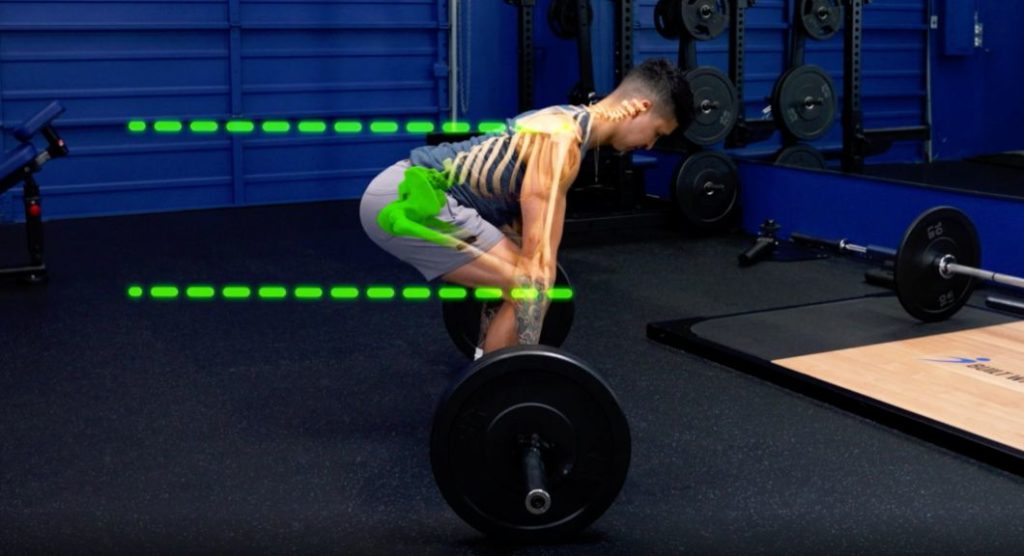
3. A neutral spine! But don't forget that your neck is a part of the spine. So, draw your head back and pick a spot on the floor a couple of meters in front of you so that your head extends in the same line as the rest of your back.
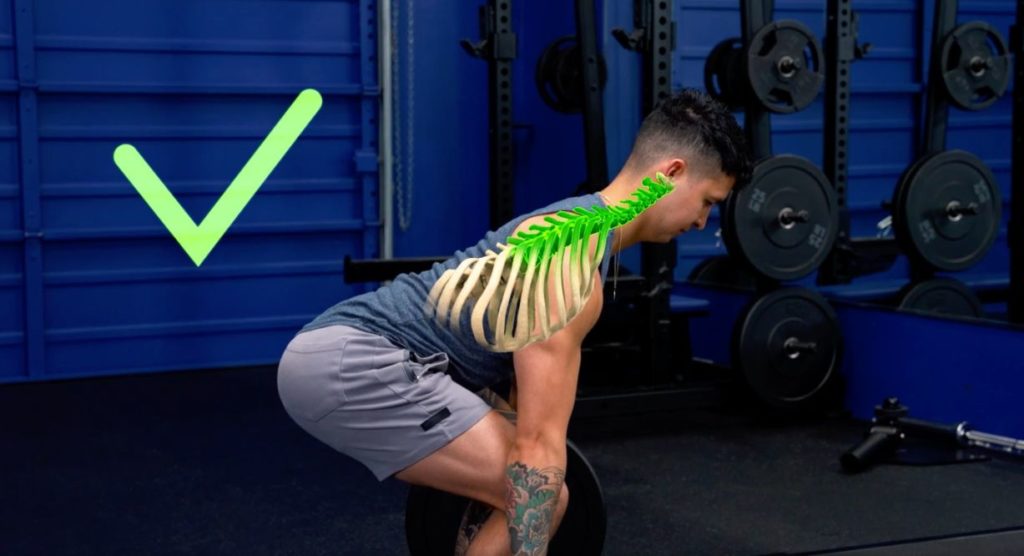
You’re now ready for step 3 of learning how to deadlift properly: creating the wedge.
Step 3: Creating The Wedge
This is the last thing you need to be mindful of about your deadlift form before the lift-off. The wedge is a powerful position that will prevent your lower back from being compromised as soon as you lift the weight.
Here's how to create the wedge (which, of course, is crucial to master when you're learning how to deadlift properly):
- Drive your knees out against your arms.
- Then, take a deep 360 breath — as if you were wearing a belt and trying to push against all sides of it, then brace your core as if someone were about to punch your stomach.
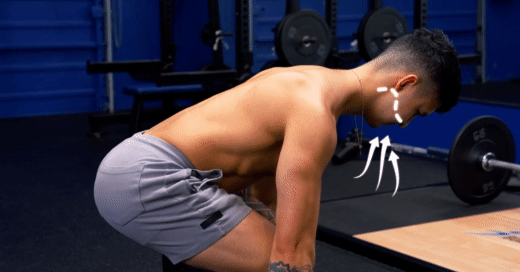
- Next, to get rid of any rounding in the upper back and shoulders, think about extending your chest and getting tall from your hips all the way to your head.
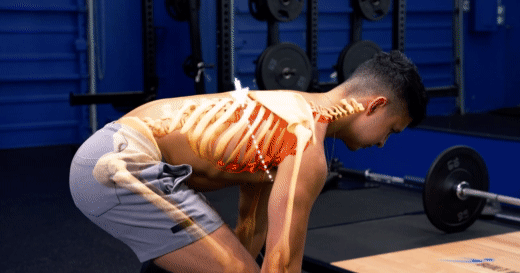
- Finally, activate your lats by squeezing your armpits as if you had oranges in them and were trying to make orange juice. Or, as if you were trying to "bend the bar in half" towards you.
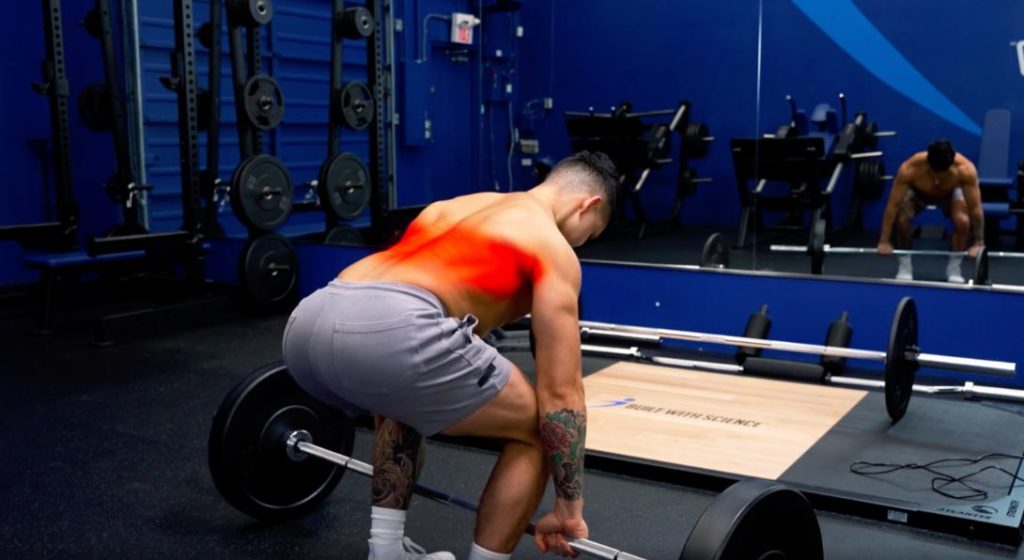
If you've done this properly, you should feel tension in your lats, core, glutes, and hamstrings. You're ready for step 4 of learning how to deadlift properly: push.
Step 4: Push
This is actually the simplest step of learning how to deadlift, but it's also where most people screw up.
That's because they think of the deadlift as a "pull" — and end up breaking out of the position we worked so hard to create from steps 1 through 3 of our "How To Deadlift" tutorial.
To avoid this:
- Imagine your arms as ropes with hooks at the end of them, just hanging onto the bar.
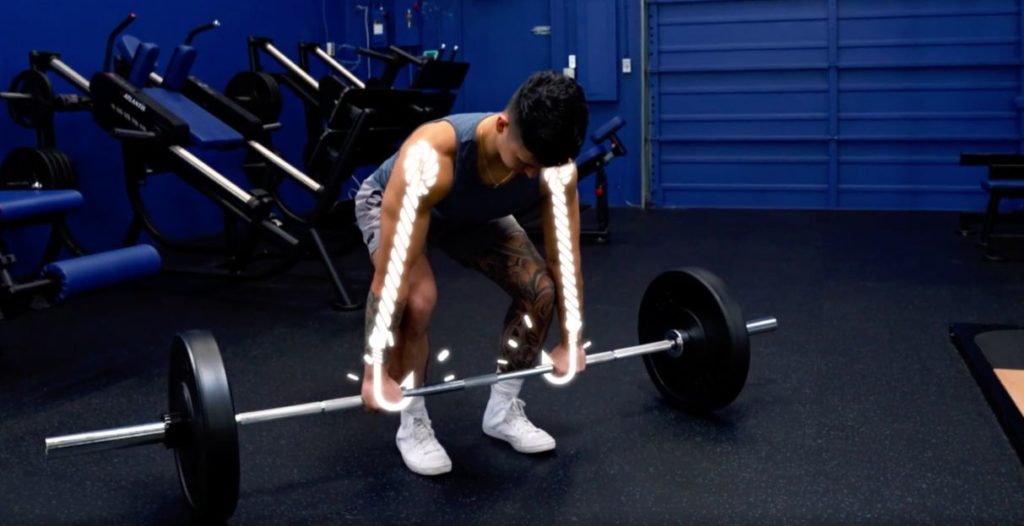
- Then, to lift the weight, rather than going from 0 to 100 and jerking the weight off the floor, keep the tightness we created in step 3 and think about pushing the floor away with your feet harder and harder until the bar lifts off the ground. When done correctly, rather than your hips rising first and lower back rounding, your hips and chest should rise at the same rate. That's the safest and strongest deadlift form.
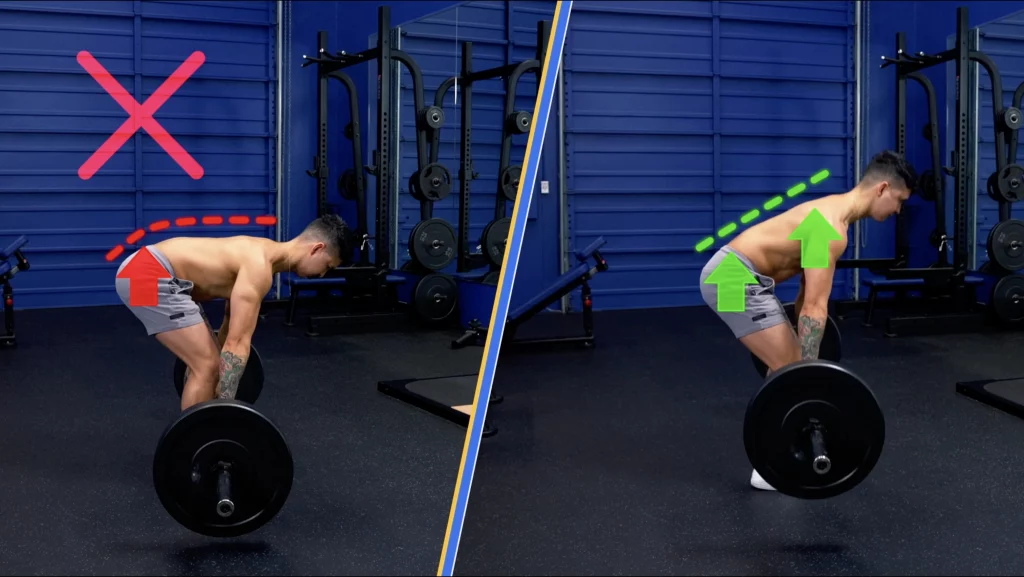
- Continue pushing the floor away until the bar passes your knees, and then think about thrusting your hips forward or humping the air in front of you to meet the bar at the top of the lift.
But, to avoid injuring your back at the top, your shoulders should not be behind your heels. And your lower back should not be arched. This is a sign that you've extended your back too far.
To prevent this, as you come to the top, imagine you're about to get punched in the stomach and keep your glutes squeezed together.
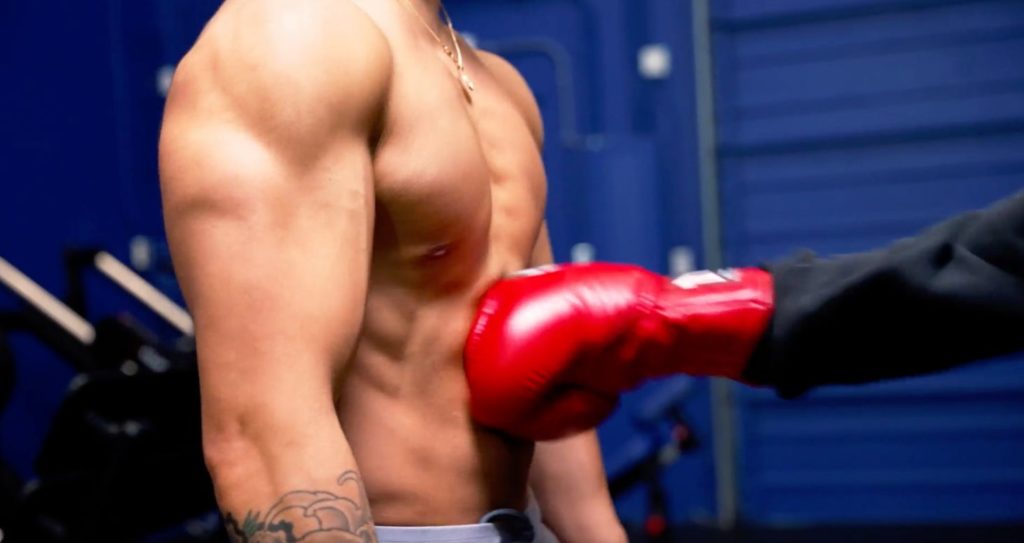
At the top, your hips, ribs, shoulders, and chin should all be stacked like parallel floors of a building.
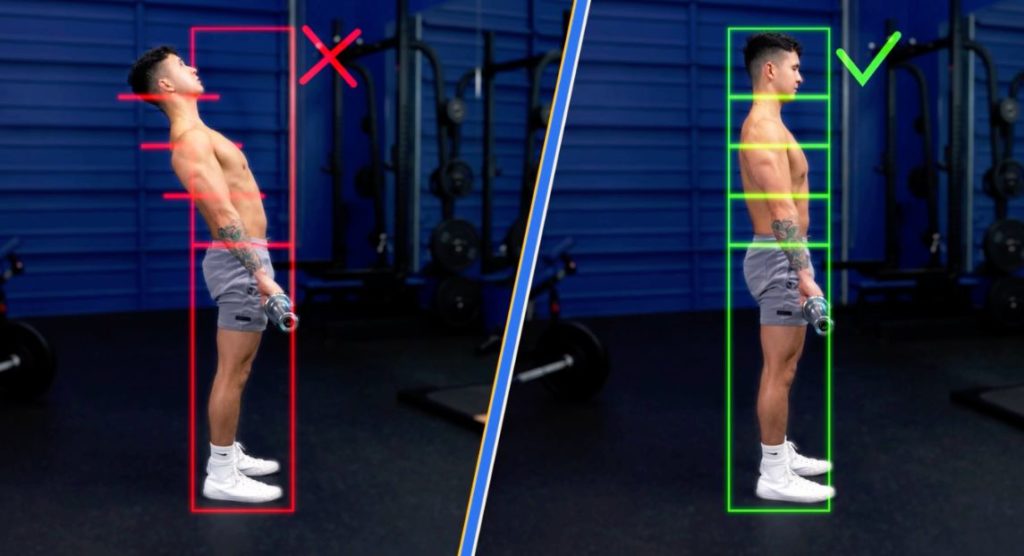
Now, if you've done this step correctly, you should feel a slight pump in your lats, hamstrings, and glutes. But don't be alarmed if you also feel this in your lower back muscles. They help stabilize the weight as you lift — and will be an area where you'll notice a lot of growth from deadlifts.
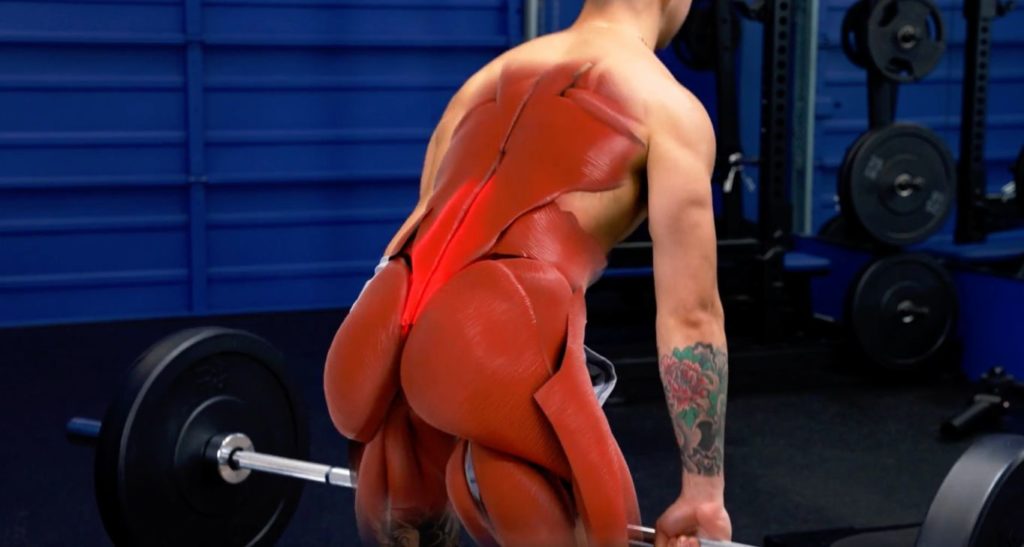
However, you want to avoid doing too many lower-back-demanding exercises in one workout, as it can be too much for them to handle. This is why it's important that you follow a well-written program. And for a step-by-step plan that shows you exactly what workouts to do every week and how to do every single exercise in detail to minimize injury and maximize growth (just as we showed you how to deadlift properly in this article), simply take our analysis quiz below to find the best program for you and your body:
Click the button below to take my analysis quiz to discover the best program for you:
↓
But now, it's time for the final step of learning how to deadlift properly: the descent.
Step 5: Descent
Wait. Why should you care about the descent when learning how to deadlift properly? Well, there are 2 reasons:
- Injury: This is where many people not only injure themselves with the wrong deadlift form.
- Muscle growth: Many people also miss out on a lot of muscle growth by letting gravity drop the weight (learn more about the benefits of stretch-focused training here).
We want to control the weight down, but we need to do this correctly.
Now, this will look very similar to what we did back in step 1, but the only difference now is that you have a bar.
Many people tend to let the bar sway forward in front of them, which causes a lot of stress on the lower back. So, instead, push your hips back and slide the bar down as close as possible along your thighs.
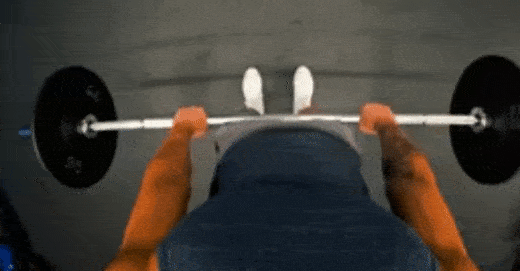
As soon as the bar passes your kneecaps, that's when you can bend your knees and slide the bar along your shins to get the bar back over your mid-foot.
But, to avoid losing tension and leaving gains at the table, avoid bouncing the weight up off the floor.
Instead, stay tight and gently touch the floor with the weight before your next rep.
Congrats! You Now Know How To Deadlift — Properly!
Congrats, my friend! You've just learned how to deadlift — properly — in just 5 simple steps. You'll have nailed the perfect deadlift form in no time at all.
Not so scary after all, right?
If you're looking to grow your back, you may find the following articles helpful:
- I Created The Smartest Back Workout For Growth (Using Science)
- 14 Best Exercises To Build The Perfect Back
- 3 Powerful Back Workouts For Size And Strength







